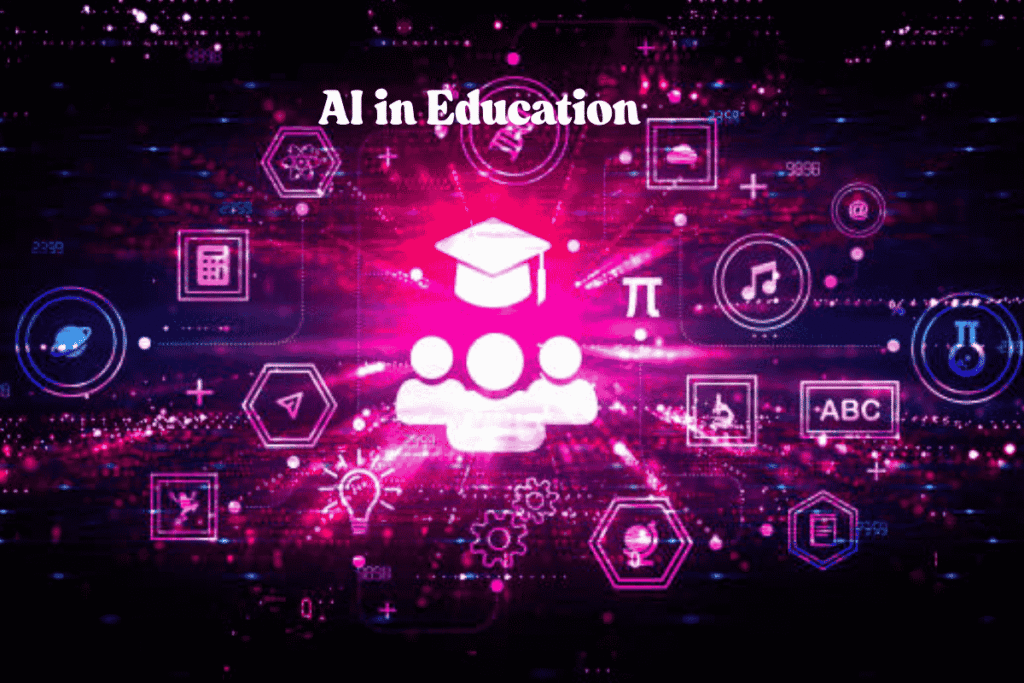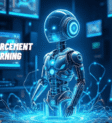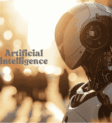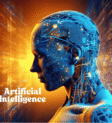Hello people! How can AI further revolutionize education? AI being used in education is changing the way schools and universities run, instruct students, and form relationships with them. AI is helping in personalizing education and making administrative tasks simpler. This form of technology is not just helping education become better, but also more available, efficient, and designed for each person.
Because AI keeps advancing, it is making a bigger difference in education, producing new ideas to tackle long-term challenges. It discusses the impact of AI on education, explains its positive effects, outlines some issues, and explores the possible future it holds for schools and universities globally.
Let’s dive in!
Table of Contents
The Rise of AI in Education
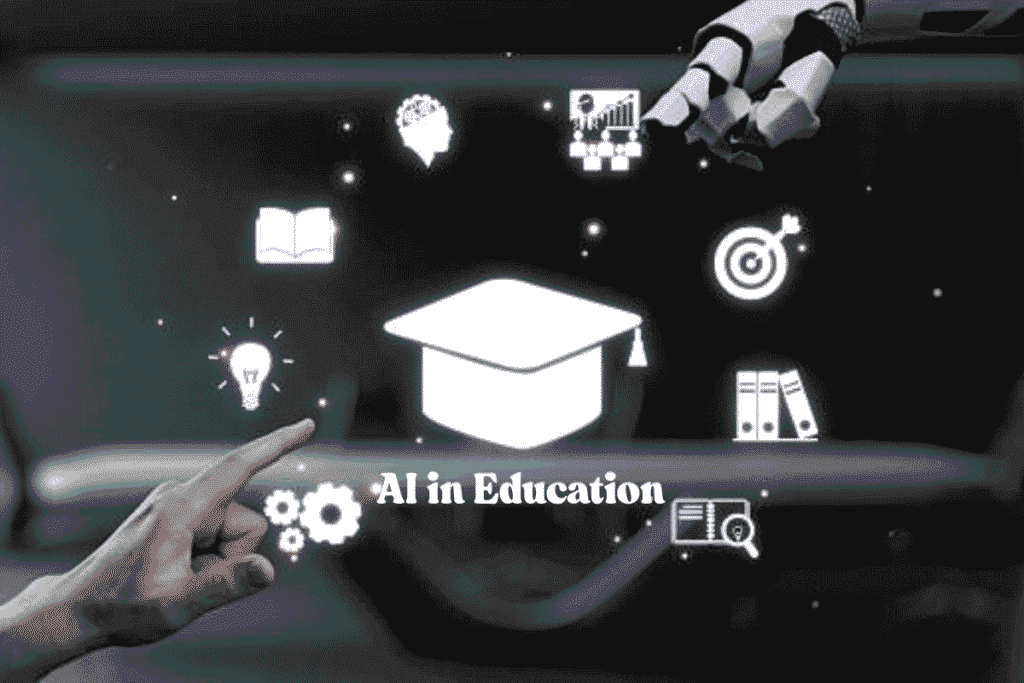
What used to be science fiction is now used in classrooms and offices to help with everyday work tasks. Using machine learning, natural language processing and data analytics is called AI in education. Its growth is fueled by struggling with overcrowded classrooms, shorter supplies and calls for focused education. Educators first saw what AI could do for education in the 1980s with basic tutoring systems.
Nevertheless, better computing systems, the growth of big data and sharp algorithm progress have promoted its use. AI is employed in schools and universities today to help develop adaptive learning, to automate grading, to anticipate students’ achievements and to back mental health efforts. The use of AI in education is expected to rise sharply, as predictions say the market could be worth over $20 billion by 2027.
Smart Personalized Learning
AI has greatly improved how personal education can be. In general, traditional educational systems do the same tasks for all students which can result in some students struggling and some feeling unchallenged. Thanks to AI, student information about learning, preferences and performance is studied to help build unique learning plans.
Learning with Adaptive Technology
AI-powered adaptive learning platforms change what students see depending on their progress. DreamBox and Smart Sparrow are examples of how platforms use special algorithms to spot students’ weaknesses and give them specially chosen exercises to improve. By using these systems, students access content that matches their skills, become more interested, and achieve better results.
Intelligent Tutoring Systems
Intelligent tutoring systems (ITS) work like individual tutors, guiding students separately. As an example, MATHia from Carnegie Learning gives students step-by-step explanations for how to solve math problems, much like a human tutor. The systems use artificial intelligence to process what the students ask and reply in a natural way. There is evidence that using ITS can lead to student improvement up to 20% better than with traditional methods.
Advantages for All Learners
AI helps students who have various needs which can include students with disabilities. Attending to hearing impairments and language barriers has become simpler with speech-to-text tools and AI translation. With AI, no student is left out because educational barriers are removed.
Organizing Admin Activities
AI is helping to improve school and university administrative functions apart from activities in the classroom. Work such as registering students, marking grades and scheduling often takes a lot of time and can be easily wrong. Apart from that, AI helps to automate these procedures, so educators and administrators can pay more attention to the learning and well-being of students.
Automated Grading and Feedback
Because of AI, systems such as Gradescope can grade tasks and tests with excellent reliability. Through machine learning, the appropriate tool can recognize particular patterns in student responses and score tests, essays and hand-written tasks. As an example, an AI tool can review an essay for its grammatical errors, logical flow and the strength of the arguments and offer detailed feedback very quickly.
Enrollment and Admissions
AI is being used by universities to simplify how they handle admissions. With AI, applications can be evaluated, success can be predicted for students, and people who support the institution’s mission can be identified. A “Jill Watson” AI chatbot is used at Georgia Tech to help solve students’ inquiries, sharing the responsibility with the admissions staff.
Future-Focused Student Insights
Predictive analytics based on AI identify students who may struggle and allow institutions to offer support right away. Looking at things like attendance, scores and participation, AI systems can tell when support is required for certain students. For instance, using Course Signals at Purdue University, students benefit from AI suggestions for study and get more support.
AI for Educator Growth
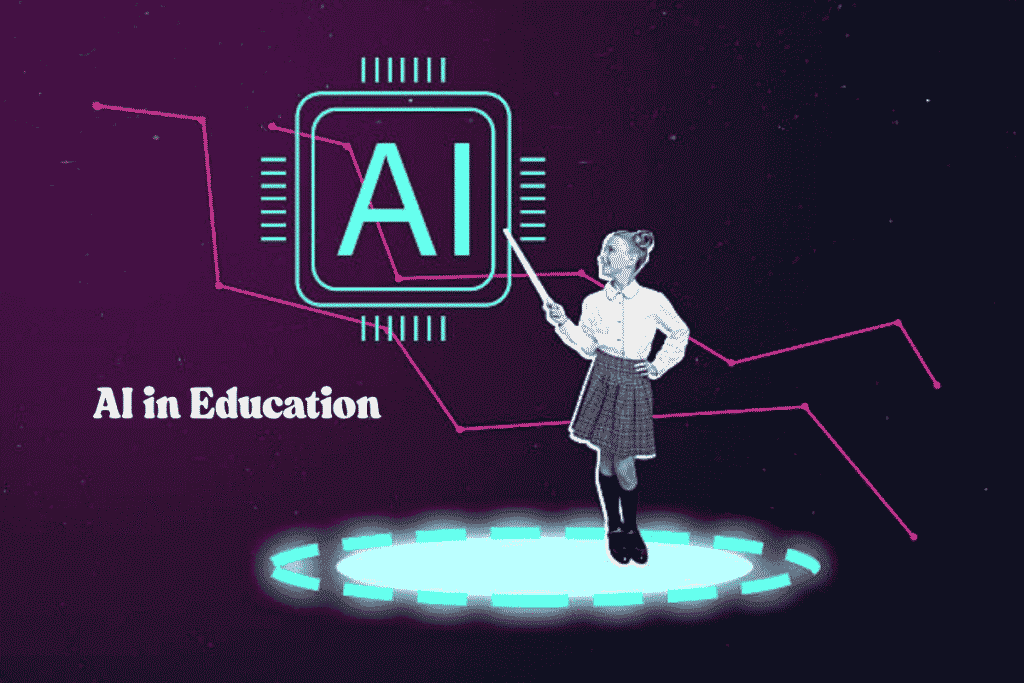
AI is meant to help and not to replace teachers. Since AI can handle routine chores, teachers have more time to help students learn. AI tools assist in helping teachers understand their students and how effective their teaching is.
Classroom Management Tools
Tools that use AI in classrooms such as Classcraft, observe and report on students’ behavior and engagement right away for teachers. This information guides teachers to make strategies that retain student attention. If the tool spots low engagement in a lecture, it could recommending adding some active participation tasks.
Professional Development
AI services also give personalized learning experiences for teachers. Edthena uses AI tools to look at recordings of lessons and offer useful suggestions for improvement. Because of this, educators can improve their talents and learn about new best practices conveniently.
AI for Inclusive Access
AI is making it possible for more people to benefit from education. Because of online learning platforms powered by AI, students in rural or poorly served locations now have the chance to learn in great classes. As an illustration, edX and Coursera employ AI to guide learners toward subjects and courses that match what they want to study and do in the future.
Language and accessibility tools
With the help of AI translation services like Google Translate and Microsoft Translator, anyone who doesn’t speak the language of the content can follow along while studying. In much the same way, providing text-to-speech and speech-to-text allows students with visual or hearing difficulties to take part in the educational process.
Virtual and Augmented Reality
AI is also playing a role in making education more engaging with VR and AR. Medical students have the chance to use VR applications with AI to practice surgery which helps them acquire experience without real risks involved. They allow people to understand and connect with complicated ideas mainly in science, engineering and medicine.
AI Bias in Learning
AI in schools is helpful, but organizations have to handle important challenges to get full value from it.
Cost and Infrastructure
Setting up AI systems is expensive because it involves advanced technology and infrastructure. AI tools are not widely used in schools in developing parts of the world due to the lack of resources. AI systems need to be maintained and updated which requires financial resources and technical skills.
Privacy and Security
Using large student data sets raises questions about how private and secure the process is. Institutions should make sure they follow laws that protect the privacy of students’ information such as FERPA in the U.S. and GDPR in Europe. Educational institutions must have clear data policies and strong cybersecurity to protect student information.
Fairness and Prejudice
Defining AI systems involves using the right and sufficient data for training. If there is bias against some groups in the data, AI systems could help create more unfairness. Suppose a machine learning tool for admissions uses biased data from the past, so it could favor or reject applicants unequally. Groups have to take steps to notice and tackle any biases that could cause unfairness.
Problems with Adapting
Some teachers and schools might not want to use AI since they fear losing their jobs or simply enjoy using older methods. You have to show business owners that AI can enhance their team, not take over.
How AI Will Affect Education
AI in education looks promising as new technologies continue to change the sector. Here is what’s popping up in the media:
Learning Continuously with AI
Because the job market changes, learning throughout our lifetimes is now necessary. AI supports learning through suggestions of skills and training that follow latest trends in the industry. For example, LinkedIn Learning recommends courses based on AI which helps professionals keep up with new skills.
AI in Mental Health Support
There are now AI systems that assist in supporting students’ mental health which is very important in education. For students facing stress or anxiety, Woebot and similar tools give advice and support through conversation. With advances in emotional AI, it might become more important for supporting student emotional health.
AI and Gamification
With AI, gamification in education is making learning more entertaining. Games with AI adapt to a student’s abilities, giving them just the right level of tasks. For example, Prodigy Math involves students using gamification to introduce new math concepts.
Global Collaboration
AI helps people from different countries to collaborate in education. Students using virtual classrooms with AI assistance can team up on projects and better understand other cultures. Zoom and Microsoft Teams now offer real-time translation thanks to AI which helps people speak and understand different languages.
Examples of AI in the Real World
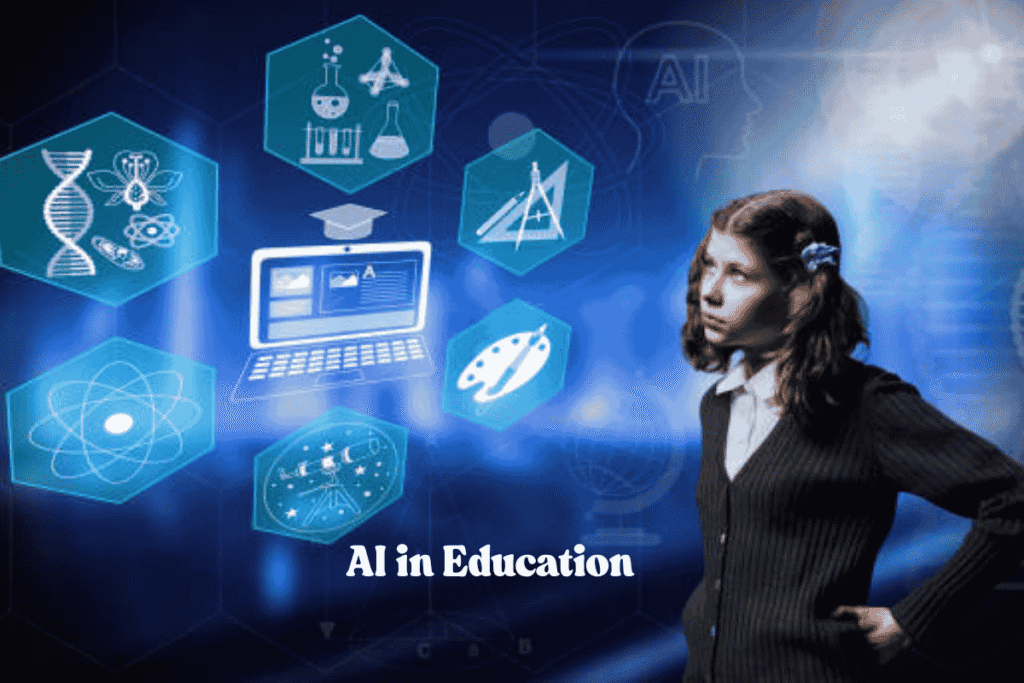
AI TA at Georgia Tech
Using artificial intelligence, Jill Watson at Georgia Tech responds to student questions in online classes. Because it is built on IBM’s Watson, Jill manages the simple queries so that human instructors can focus their attention elsewhere. Students usually do not notice any difference between Jill’s answers and those given by human TAs which proves that AI can smoothly fit into educational environments.
Squirrel AI in China
Squirrel AI helps millions of students by using technology to give them personalized teaching. The system studies each student’s progress and offers lessons based on what they need which greatly raises their test results. Squirrel AI’s success proves that AI can play a major role in solving educational inequalities.
Smart Guidance at ASU
AI is used by Arizona State University to support academic advising. Advisor monitors students, offers customized advise about their courses and recommends how they can study well. For this reason, graduation rates rose and students felt more satisfied with their education.
Conclusion
AI in educational institutions brings new benefits, lets teachers focus on students more, helps automate tasks, and makes education available to more people. With AI, education faces persistent issues less, significantly improving the way schools are managed and how inclusive they become. At the same time, it won’t succeed unless costs, privacy, and bias are handled and educators and technology collaborate.
Because AI is evolving, it will have an increasing presence in schools and universities, helping to make education more suitable, fairer, and more meaningful than we have seen. What will AI’s next breakthrough in education be?
FAQS
- In what ways does AI help shape learning for individual students?
AI allows content to be addressed in a way that meets each student’s skills and speed.
- In what ways is AI used in managing administrative jobs?
AI handles the grading, organization of a schedule, and admissions process for less work.
- How does AI benefit students who are disabled?
AI makes speech and text available for people with accessibility needs.
- What hurdles does AI bring to education?
Cost, maintaining privacy,y and the possibility of biases are the main problems.
- In what ways might AI support the growth of educators?
AI reviews how teachers teach and provides targeted guidance.
